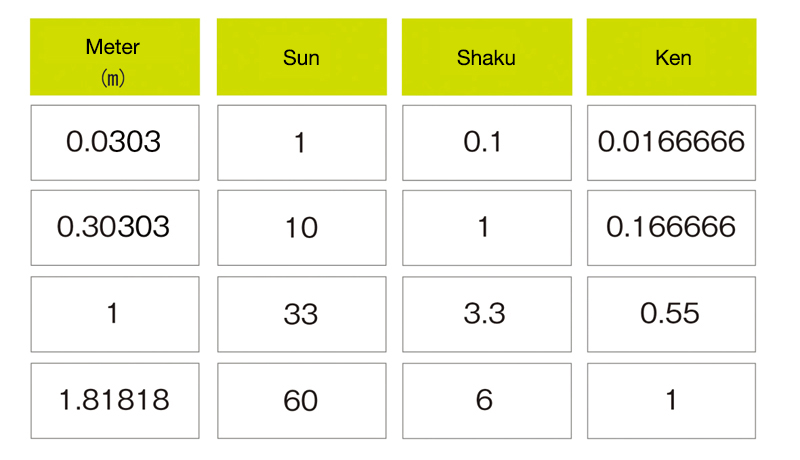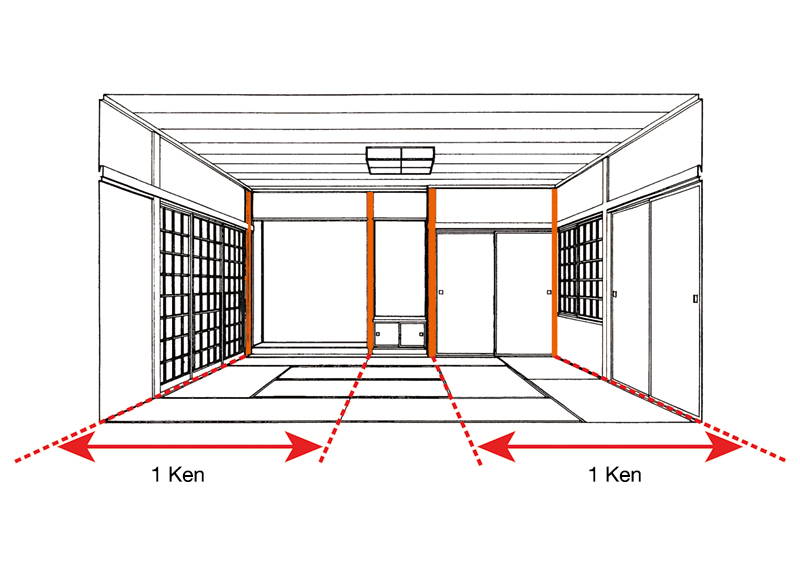Ken
間
Ken
CATEGORIES
Ken is a unit of length in the traditional Japanese system of measurement known as shakkanho.
Shakkanho was established under the Weights and Measures Act of 1891. Under this law, “shaku” was defined as the unit of length, “sho” as the unit of volume and “kan” as the unit of mass. This continued to be used as the Japanese system of weights and measures until 1959 when, after several phases of transition, the units were standardized under the metric system. The actual length of 1 ken had varied by era and region until with the Weights and Measures Act of 1891, 1 ken was defined as being equivalent to 6 shaku or 1.812 meters. (10 shaku is 1 jo.)
In ancient China, the space between two pillars was called ken and that is how this unit came to be used to designate the distance between pillars. For this reason, even today after the adoption of the metric system, ken is a familiar term in Japanese architecture as the underlying basis for the dimensions of household fittings and tatami mats. A square with sides of 1 ken is called 1 tsubo and is used as a unit of area to indicate the size of houses and land. In Japanese stage art, too, ken is used as a unit to represent the width and depth of the stage, which has its roots in kabuki.
- Chart of measurement units (length)


